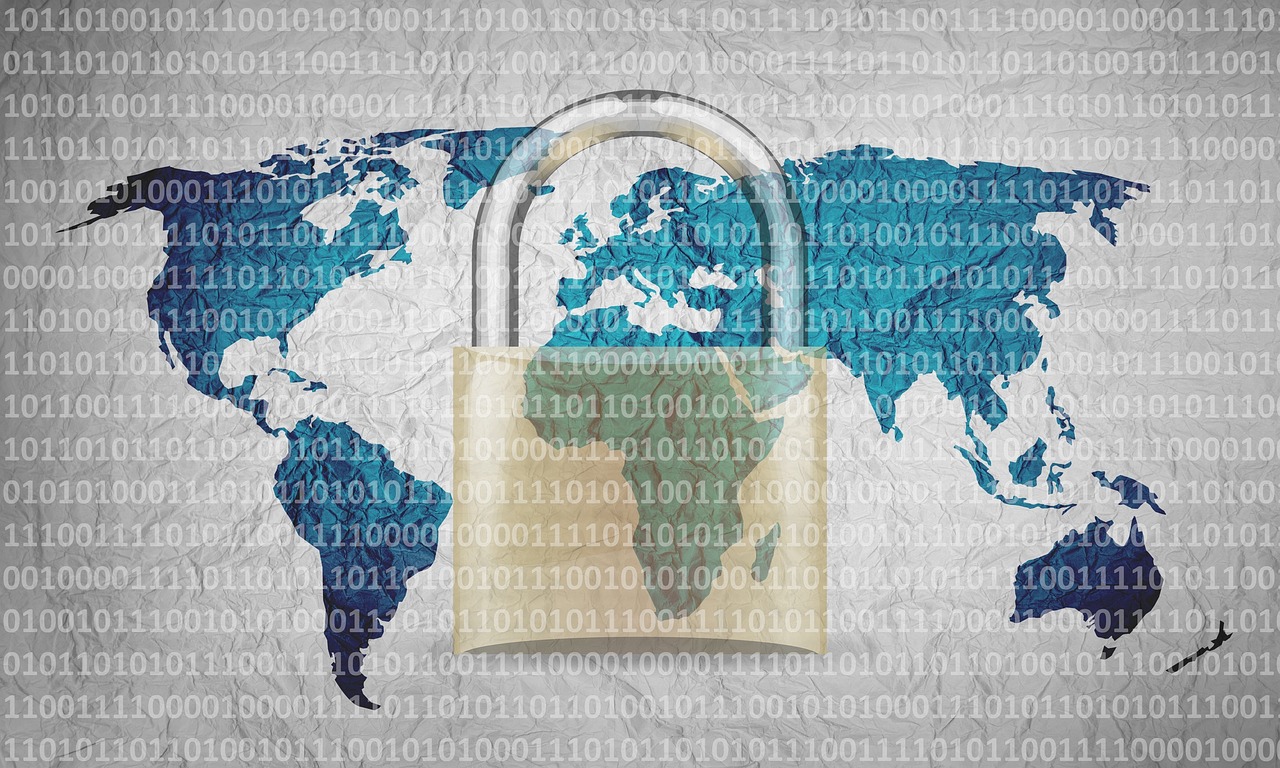Unearthing the Impact of Human Behavior on Safety
In our daily lives, safety is often taken for granted, yet it is profoundly influenced by human behavior. From the moment we wake up to the time we go to bed, our decisions, actions, and even our inactions play a critical role in determining how safe we feel and how safe we actually are. Whether it’s the way we drive, the precautions we take at work, or the habits we cultivate at home, understanding these behaviors is essential for fostering a culture of safety. This article explores the intricate ways in which our actions and interactions shape safety outcomes across various contexts, emphasizing the psychological, social, and environmental factors that contribute to safety practices and incidents.
Imagine a bustling construction site. Workers are operating heavy machinery, and the stakes are high. Here, a single misjudgment can lead to catastrophic consequences. It’s not just about following safety protocols; it’s about the human element—the choices made under pressure, the communication between team members, and the overall mindset regarding safety. This article will delve into these aspects, providing insights into how we can improve safety through better understanding of human behavior.
Safety is not merely a set of rules to follow; it’s a dynamic interplay of personal beliefs, social influences, and technological advancements. Each of these factors contributes to the overall safety culture within an organization or community. By examining these elements, we can uncover the underlying motivations that drive safe or unsafe behavior and ultimately pave the way for more effective safety practices.
As we navigate through the complexities of safety, we’ll also highlight the importance of communication, training, and the role of technology in shaping our safety behaviors. The journey to a safer environment is not a solitary one; it requires collaboration, understanding, and a commitment to continuous improvement. So, let’s dive deeper into the psychology of safety and explore how our minds can either be our greatest ally or our worst enemy in the pursuit of safety.
Understanding the psychological aspects of human behavior is crucial for improving safety protocols. Our perceptions, attitudes, and mental states significantly affect decision-making in safety-critical situations. For instance, when faced with a dangerous scenario, an individual’s past experiences often dictate their response. If someone has previously encountered a hazardous situation and emerged unscathed, they might underestimate the risks involved in similar situations in the future.
In many cases, cognitive biases can cloud judgment. The optimism bias—the belief that bad things are less likely to happen to oneself than to others—can lead to risky behaviors. On the other hand, the availability heuristic can cause individuals to overestimate the likelihood of a risk if they have recently heard about a related incident. These psychological factors highlight the need for safety training that not only informs but also reshapes perceptions and attitudes towards risks.
Social dynamics play a significant role in shaping safety behaviors. Peer pressure, group norms, and organizational culture can either promote or hinder safe practices. For example, in a workplace where safety is prioritized, employees are more likely to adopt safe behaviors, knowing that their colleagues and supervisors value compliance. Conversely, in environments where safety is not emphasized, individuals may feel compelled to take shortcuts or ignore protocols to fit in with the group.
Individuals’ perceptions of risk greatly influence their safety decisions. Cognitive biases and past experiences shape risk assessment and subsequent behavior in hazardous environments. This section discusses how these perceptions can lead to either proactive safety measures or dangerous complacency.
Effective communication is vital for fostering a safety culture. Clear messaging and feedback enhance safety awareness and compliance among individuals and teams. When team members feel comfortable sharing concerns or asking questions, they contribute to a safer work environment. Regular safety meetings, open-door policies, and anonymous reporting systems can help facilitate this open dialogue.
Training programs are essential for promoting safe behaviors. Educational initiatives equip individuals with the knowledge and skills necessary to navigate risks effectively. By incorporating real-life scenarios into training sessions, organizations can better prepare their employees for potential hazards, ensuring they know how to respond appropriately when faced with danger.
Group dynamics can either enhance or undermine safety efforts. Teamwork, leadership, and collaboration significantly influence safety outcomes in various settings. A strong leader who prioritizes safety can inspire a culture where everyone feels responsible for upholding safety standards.
Technology plays a pivotal role in modern safety practices. Advancements in technology can mitigate risks and enhance human behavior towards safety compliance. From safety apps that provide real-time alerts to advanced monitoring systems that track safety metrics, technology can serve as a powerful ally in the quest for safety.
The rise of automation raises questions about human oversight in safety-critical systems. While automation can reduce human error, it is essential to maintain a balance between automated processes and human intervention. Training individuals to understand and monitor automated systems is crucial for ensuring safety in environments where technology plays a significant role.
Utilizing data analytics can provide valuable insights into safety trends. By analyzing incident reports, near-misses, and compliance data, organizations can identify patterns and areas for improvement. This data-driven approach not only informs better safety strategies but also fosters a culture of continuous improvement.
- What is the most significant factor affecting safety behavior? Human behavior, influenced by psychological, social, and environmental factors, plays a critical role in safety outcomes.
- How can organizations improve safety culture? By prioritizing communication, training, and leadership that emphasizes safety, organizations can foster a culture where safety is valued.
- What role does technology play in enhancing safety? Technology can provide tools and systems that help monitor risks and improve compliance with safety protocols.

The Psychology of Safety
Understanding the psychological aspects of human behavior is crucial for improving safety protocols. Safety isn’t just about rules and regulations; it’s deeply embedded in our minds. Have you ever thought about why some people take risks while others play it safe? It often boils down to perception, attitude, and mental state. When faced with a potentially dangerous situation, our brains go into overdrive, weighing the risks and benefits of our actions. This cognitive process is influenced by various factors, including past experiences, emotional responses, and even our environment.
For instance, imagine two drivers approaching a yellow traffic light. One driver sees it as a warning to slow down, while the other views it as an opportunity to speed through. This difference in perception can lead to drastically different outcomes. The first driver might avoid an accident, while the second could end up in a collision. This scenario highlights how our mental frameworks shape our decisions, especially in safety-critical situations.
Moreover, our attitudes towards safety are often shaped by societal norms and personal experiences. If someone grows up in an environment where safety precautions are emphasized, they are more likely to adopt similar attitudes. Conversely, if they witness risky behavior being normalized, they may become desensitized to danger. It’s a classic example of how social learning influences our behavior. To illustrate this, consider the following table:
| Environment | Influence on Safety Attitude |
|---|---|
| High Safety Emphasis | Increased awareness and adherence to safety protocols |
| Risky Behavior Normalized | Desensitization to dangers and increased likelihood of unsafe actions |
Cognitive biases also play a significant role in how we perceive risk. For example, the optimism bias leads individuals to believe that they are less likely to experience negative events compared to others. This can result in unsafe behaviors, as people underestimate the potential consequences of their actions. Additionally, confirmation bias can lead individuals to ignore information that contradicts their existing beliefs about safety, further complicating the decision-making process.
In safety-critical environments, such as construction sites or healthcare facilities, the stakes are incredibly high. Understanding how psychological factors influence behavior can help organizations develop better safety protocols. By fostering a culture that prioritizes mental well-being and open communication, companies can empower their employees to make safer choices. This approach not only enhances individual safety but also contributes to a collective sense of responsibility.
As we navigate through various challenges, it’s essential to remember that safety is not just a set of rules to follow; it’s a mindset. By recognizing the psychological factors at play, we can create environments that promote safer behaviors and better outcomes. So, the next time you find yourself in a situation where safety is at stake, take a moment to reflect on your thoughts and feelings. Are they guiding you towards a safe decision, or are they leading you down a risky path?
- What is the importance of understanding psychology in safety? Understanding psychology helps identify the reasons behind unsafe behaviors, allowing for better safety protocols.
- How do cognitive biases affect safety decisions? Cognitive biases can lead to underestimating risks, resulting in unsafe actions.
- Can organizational culture influence safety practices? Yes, a positive organizational culture that emphasizes safety can significantly enhance compliance and awareness among employees.

When we think about safety, it’s easy to focus solely on rules, regulations, and the physical environment. However, social influences play a monumental role in shaping how individuals and groups behave in safety-critical situations. Have you ever noticed how your friends’ actions can sway your own? This phenomenon is particularly evident in safety contexts, where peer pressure and group norms can either promote or hinder safe practices. For instance, if everyone around you is taking shortcuts, you might feel compelled to follow suit, even if you know it’s risky. It's like being in a high-stakes game where the stakes are not just your score but also your safety and well-being.
Moreover, the culture within an organization can significantly impact safety behaviors. A workplace that prioritizes safety and encourages open communication fosters an environment where employees feel comfortable reporting hazards or unsafe practices. On the flip side, in a culture where safety is sidelined, employees may hesitate to speak up, leading to a dangerous cycle of negligence. The dynamic between employees and management can either create a fortress of safety or a house of cards waiting to collapse. This is why understanding the social fabric of any environment is crucial for enhancing safety protocols.
To illustrate how social influences can manifest in safety behaviors, consider the following scenarios:
| Scenario | Influence on Safety Behavior |
|---|---|
| Team members consistently wear safety gear | Encourages others to adopt the same practice, reinforcing safety norms. |
| Management downplays safety incidents | Creates a culture of silence where employees may ignore safety hazards. |
| Peer-led safety training sessions | Enhances understanding and compliance through shared experiences. |
Additionally, social influences are not just limited to direct interactions among individuals. They can also stem from broader societal norms and expectations. For instance, in communities where safety regulations are strictly enforced and respected, individuals are more likely to adopt safe behaviors. This collective mindset can lead to a culture where safety is not just a personal responsibility but a shared value. It’s like a ripple effect; one person’s commitment to safety can inspire others, creating a wave of positive behavior that can significantly reduce incidents.
In summary, understanding the social influences on safety behavior is essential for developing effective safety strategies. By fostering a supportive culture, encouraging open communication, and promoting positive peer influences, organizations can significantly enhance their safety outcomes. So, the next time you think about safety, remember that it’s not just about the rules—it's also about the people and the social dynamics at play. Are you ready to be a part of a safety-conscious culture?
- How can peer pressure impact safety behavior? Peer pressure can lead individuals to either adopt safe practices or engage in risky behaviors, depending on the norms established within their group.
- What role does organizational culture play in safety? A positive organizational culture that prioritizes safety encourages employees to adhere to safety protocols and report hazards without fear of repercussions.
- Can social dynamics be changed to improve safety? Yes, through training, leadership support, and creating an open environment for discussion, organizations can shift social dynamics towards prioritizing safety.

The way individuals perceive risk plays a crucial role in their decision-making processes, especially in safety-critical environments. Imagine you're driving a car; your perception of the risk involved in speeding can either lead you to push the pedal to the metal or to stay within the limits. This perception isn't just a random thought; it’s shaped by various factors, including personal experiences, cultural background, and even media influence. For instance, someone who has been in a car accident may perceive the risk of speeding as significantly higher than someone who has never experienced such an event. This disparity in risk perception can lead to vastly different decisions in similar situations.
Moreover, cognitive biases often cloud our judgment when assessing risks. Take, for example, the availability heuristic, where people tend to overestimate the likelihood of events that are more memorable or recent in their minds. If a person has recently heard about a workplace accident, they might become overly cautious, potentially leading to unnecessary anxiety or even paralysis in decision-making. On the flip side, they might underestimate risks that are less sensationalized, such as repetitive strain injuries, simply because they don’t capture headlines.
Another fascinating aspect of risk perception is how it varies across different demographics. Age, gender, and social status can influence how risks are viewed and managed. For instance, younger individuals might engage in riskier behaviors, believing they are invincible, while older individuals may take a more conservative approach. Understanding these differences is essential for developing targeted safety interventions that resonate with specific groups.
In a workplace setting, it’s critical to foster an environment where employees feel comfortable discussing their perceptions of risk. Open communication can lead to a collective understanding of safety practices and encourage individuals to share their experiences and insights. This not only enhances overall safety but also cultivates a culture of trust and collaboration. When team members feel heard, they are more likely to adhere to safety protocols and report hazards without fear of judgment.
To illustrate the interplay between risk perception and decision-making, consider the following table that outlines various factors influencing risk assessment:
| Factor | Description | Impact on Risk Perception |
|---|---|---|
| Personal Experience | Past incidents that individuals have encountered. | Increases awareness and caution. |
| Cognitive Biases | Heuristics that distort thinking. | Can lead to overestimating or underestimating risks. |
| Social Influences | Peer and cultural norms. | Affects compliance and risk-taking behavior. |
| Communication | Clarity and openness in discussing risks. | Enhances understanding and adherence to safety protocols. |
In conclusion, understanding the nuances of risk perception is not merely an academic exercise; it has real-world implications for safety practices. By acknowledging how various factors shape our views on risk, organizations can tailor their safety strategies to foster better decision-making among individuals. This proactive approach not only mitigates potential hazards but also empowers individuals to make informed choices that prioritize their safety and the safety of those around them.
- What is risk perception? Risk perception refers to the subjective judgment individuals make about the characteristics and severity of a risk.
- How do cognitive biases affect decision-making? Cognitive biases can distort our understanding of risks, leading to either overestimation or underestimation of potential dangers.
- Why is open communication important in safety practices? Open communication fosters a culture of trust, allowing individuals to share their concerns and insights about safety without fear of judgment.
- Can training improve risk perception? Yes, effective training can enhance individuals' understanding of risks and equip them with the skills to make safer decisions.

Effective communication is not just a nice-to-have; it’s a critical component of fostering a robust safety culture. Imagine a workplace where everyone is on the same page, where messages about safety protocols flow freely, and where feedback is not only welcomed but actively sought. This kind of environment does wonders for safety outcomes. When teams communicate openly, it reduces the chances of misunderstandings and mistakes that can lead to accidents. In fact, research shows that organizations with strong communication practices experience significantly fewer incidents than those that don’t prioritize it.
So, what does effective communication look like in the context of safety? It involves a few key elements:
- Clarity: Messages must be clear and concise. Jargon and technical language can confuse rather than inform. For instance, a simple instruction like "Wear your helmet" is far more effective than "Ensure head protection is utilized in accordance with safety protocols."
- Feedback: Creating a culture where feedback is encouraged can highlight potential risks before they escalate. Regular safety meetings where employees can voice concerns or suggestions can bridge gaps in communication.
- Consistency: Consistent messaging reinforces safety protocols. If safety signs, verbal instructions, and training materials all convey the same message, employees are more likely to internalize those safety practices.
Moreover, the role of non-verbal communication should not be overlooked. Body language, tone of voice, and even eye contact can significantly impact how messages are received. For example, if a supervisor communicates safety guidelines while appearing distracted or uninterested, it may send the message that safety is not a priority. On the flip side, a leader who engages with their team, making eye contact and showing enthusiasm about safety practices, can inspire others to take those practices seriously.
In addition, technology plays a pivotal role in enhancing communication. With the rise of digital platforms, organizations can utilize tools like instant messaging, video conferencing, and safety apps to disseminate information quickly and effectively. Imagine a scenario where an employee can report a safety hazard in real-time through a mobile app, ensuring that the issue is addressed promptly. This immediacy can be the difference between a near-miss and a serious incident.
Ultimately, fostering a culture of open communication regarding safety is not just beneficial; it's essential. It empowers employees to take ownership of their safety and the safety of their colleagues. When individuals feel comfortable sharing their thoughts and concerns, it creates a proactive approach to safety rather than a reactive one. This shift can lead to a more engaged workforce, lower accident rates, and a stronger overall safety culture.
- Why is communication important for safety?
Effective communication ensures that everyone understands safety protocols, reducing the likelihood of accidents. - How can I improve communication in my team?
Encourage open dialogue, provide training on effective communication, and utilize technology to streamline information sharing. - What role does feedback play in safety communication?
Feedback allows for the identification of potential risks and reinforces the importance of safety practices.

When it comes to safety, the significance of training and education cannot be overstated. Imagine stepping into a high-stakes environment, whether it’s a construction site, a hospital, or a manufacturing plant, where every decision can mean the difference between safety and disaster. This is where effective training programs come into play. They are not just a box to tick but a vital component in shaping a culture of safety. By equipping individuals with the necessary knowledge and skills, organizations can significantly reduce the likelihood of accidents and incidents.
Training in safety protocols serves multiple purposes. Firstly, it enhances awareness of potential hazards. Employees who are educated about the risks they face are more likely to engage in safe practices. For instance, a well-structured training program can highlight the importance of using personal protective equipment (PPE) and adhering to safety protocols. Secondly, education fosters a sense of responsibility among employees. When individuals understand the implications of their actions, they are more inclined to take ownership of their safety and that of their colleagues.
Moreover, the effectiveness of training can be amplified through various methods. Traditional classroom training is often supplemented with hands-on workshops, simulations, and even virtual reality experiences. These methods cater to different learning styles, ensuring that every employee grasps the essential concepts. For example, a table summarizing different training methods and their effectiveness could look like this:
| Training Method | Description | Effectiveness |
|---|---|---|
| Classroom Training | Instructor-led sessions covering theoretical aspects of safety. | Moderate |
| Hands-on Workshops | Practical sessions where employees practice safety procedures. | High |
| Simulations | Realistic scenarios that mimic potential safety risks. | Very High |
| Virtual Reality | Immersive experiences that allow employees to navigate hazardous environments safely. | Very High |
In addition to enhancing individual skills, training programs also promote teamwork and communication among employees. Safety is often a collective effort, and when team members are well-versed in safety protocols, they can work together more effectively to mitigate risks. Building a culture where safety is prioritized requires constant reinforcement through ongoing education and training sessions. This is where refresher courses come into play, ensuring that safety knowledge remains fresh and relevant.
Furthermore, organizations must recognize that training should not be a one-time event. Safety practices evolve, and so should the training programs. Incorporating feedback from employees about training effectiveness can lead to continuous improvement. Regular assessments and updates to training materials ensure that employees are not only compliant with current regulations but also prepared for any new challenges that may arise.
In conclusion, the impact of training and education on safety is profound. By investing in comprehensive training programs, organizations can cultivate a workforce that is not only skilled but also motivated to prioritize safety. It’s about creating an environment where safety is woven into the very fabric of the organizational culture, ultimately leading to safer workplaces and communities.
- What are the key components of an effective safety training program? An effective safety training program should include clear objectives, hands-on practice, regular assessments, and ongoing education to adapt to changing environments.
- How often should safety training be conducted? Safety training should be conducted regularly, with refresher courses at least annually, or more frequently if there are significant changes in procedures or regulations.
- Can technology enhance safety training? Absolutely! Technologies like virtual reality and simulations can provide immersive training experiences that enhance learning and retention.
- What role does employee feedback play in safety training? Employee feedback is crucial as it provides insights into the effectiveness of training programs and helps identify areas for improvement.

When it comes to safety practices, the influence of group dynamics cannot be underestimated. Think about it: have you ever noticed how your behavior changes when you're in a group versus when you're alone? This phenomenon is not just a quirk of human nature; it's a fundamental aspect of how we interact and respond to safety protocols. In various settings—be it in the workplace, at home, or in public spaces—our actions are often swayed by those around us. The dynamics of a group can either bolster safety measures or inadvertently lead to risky behaviors. For instance, when a team prioritizes safety, it creates a culture where every member feels responsible for adhering to safety practices. This collective responsibility fosters an environment where individuals are more likely to speak up about unsafe conditions or practices.
On the flip side, group dynamics can also lead to a diffusion of responsibility. In situations where individuals feel that others are responsible for safety, they may be less likely to take action themselves. This is often seen in large teams where the presence of others creates a false sense of security. Imagine a crowded workplace where everyone assumes someone else will report a hazard; this can lead to dangerous situations. To combat this, fostering a culture of accountability is essential. Effective leadership and clear communication can help ensure that every team member understands their role in maintaining safety.
Furthermore, the concept of teamwork plays a significant role in safety practices. Teams that work well together are generally more aware of their environment and the risks associated with it. They communicate openly, share knowledge, and support each other in adhering to safety protocols. This collaboration not only enhances individual awareness but also strengthens the overall safety culture within the organization. For example, regular safety meetings can serve as platforms for team members to discuss potential hazards and brainstorm solutions together.
Additionally, the role of leadership cannot be overlooked. Leaders set the tone for safety practices by modeling appropriate behaviors and emphasizing the importance of safety in their messaging. A leader who actively participates in safety training and encourages open dialogue about safety concerns can inspire their team to prioritize safety as well. This creates a ripple effect, where the commitment to safety becomes ingrained in the team’s culture.
In conclusion, understanding the interplay of group dynamics and safety practices is crucial for creating a safe environment. By recognizing how social influences affect behavior, organizations can implement strategies that promote a culture of safety. This includes fostering teamwork, encouraging accountability, and ensuring strong leadership. When everyone feels responsible and empowered to contribute to safety, the likelihood of incidents decreases significantly.
- How do group dynamics affect individual safety behavior?
Group dynamics can lead to either enhanced safety practices or risky behaviors, depending on the overall culture and accountability within the team.
- What role does leadership play in promoting safety?
Leaders set the tone for safety by modeling behavior, communicating the importance of safety, and encouraging open dialogue about concerns.
- How can teamwork improve safety practices?
Effective teamwork fosters communication and shared responsibility, making individuals more aware of risks and more likely to adhere to safety protocols.

In today's fast-paced world, technology is a game-changer when it comes to enhancing safety across various domains. It's not just about shiny gadgets or advanced software; it's about how these innovations fundamentally alter our approach to safety. Imagine a workplace where potential hazards are detected before they even pose a threat, or a home where smart devices alert you to dangers like gas leaks or fires. This is the power of technology in safety, and it's reshaping the landscape of how we protect ourselves and others.
One of the most significant advancements in safety technology is the integration of real-time monitoring systems. These systems utilize sensors and IoT (Internet of Things) devices to collect data on various environmental factors, such as temperature, humidity, and air quality. By continuously analyzing this data, organizations can identify potential risks and take proactive measures to mitigate them. For instance, in industrial settings, sensors can detect equipment malfunctions before they lead to accidents, allowing for timely interventions that save lives and reduce costs.
Moreover, the advent of artificial intelligence (AI) has revolutionized risk assessment and management. AI algorithms can analyze vast amounts of data to identify patterns that humans might overlook. This capability is crucial in fields like healthcare, where AI can predict patient deterioration based on historical data, enabling healthcare providers to act swiftly. Similarly, in transportation, AI-driven systems can enhance safety by predicting and preventing accidents through advanced analytics and real-time decision-making.
However, it's essential to recognize that while technology offers incredible benefits, it also introduces new challenges. The rise of automation in safety-critical systems raises important questions about human oversight. As machines take over more responsibilities, how do we ensure that humans remain in control? Striking the right balance between automated processes and human intervention is vital. For instance, in aviation, while autopilot systems enhance safety, pilots must still be prepared to take over in emergencies. This balance is crucial in maintaining safety without compromising efficiency.
Furthermore, the use of data analytics in safety management cannot be overstated. Organizations are now leveraging data-driven insights to improve their safety protocols continually. By analyzing historical incident data, teams can identify trends and develop targeted strategies to address specific risks. For example, if a company notices a spike in accidents during a particular shift, they can investigate further and implement changes, such as additional training or staffing adjustments, to enhance safety during those hours.
To sum it up, technology is not just an accessory in the realm of safety; it is an integral part of the solution. As we continue to innovate and integrate new technologies into our safety practices, we must also remain vigilant about the potential risks and challenges that come with them. Embracing a holistic approach that combines technology with human oversight and continuous improvement will ultimately lead to safer environments for everyone.
- How does technology improve workplace safety?
Technology enhances workplace safety through real-time monitoring, predictive analytics, and automation, allowing for proactive risk management. - What role does AI play in safety?
AI analyzes data to identify patterns and predict risks, enabling quicker responses to potential safety issues. - Are there risks associated with relying on technology for safety?
Yes, while technology improves safety, it can also create challenges, such as over-reliance on automated systems and the need for human oversight.

In today's fast-paced world, automation has become a cornerstone of efficiency and productivity across various industries. However, while machines and software can handle numerous tasks with precision, the question of human oversight in safety-critical systems remains paramount. Think about it: if we rely solely on automated systems, are we risking the very safety we aim to enhance? This balancing act between automation and human intervention is a fascinating dance that requires careful consideration.
One of the most significant challenges in this arena is the potential for over-reliance on technology. When systems are automated to the point where humans are no longer engaged, the risk of complacency creeps in. Operators might become passive observers rather than active participants, leading to a dangerous disconnect. For instance, consider a scenario in aviation where autopilot systems handle most of the flight. While this technology reduces the workload for pilots, it also requires them to maintain a high level of situational awareness and readiness to take control if something goes awry. Without this vigilance, the consequences can be dire.
Furthermore, the complexity of automated systems can sometimes obscure transparency. When operators do not fully understand how a system works, they may struggle to intervene effectively in emergencies. This gap in knowledge can lead to critical errors in judgment when human oversight is needed most. A study published in the Journal of Safety Research highlighted that operators who were less familiar with automated systems made more mistakes during critical failure scenarios compared to those who had received comprehensive training.
To illustrate the importance of maintaining a balance between automation and human oversight, let’s take a look at a few key points:
- Continuous Training: Regular training sessions are essential to ensure that operators are not only familiar with automated systems but also capable of stepping in when necessary.
- Design for Human Interaction: Safety systems should be designed to allow for easy human intervention, ensuring that operators can quickly take control when required.
- Feedback Mechanisms: Implementing robust feedback systems can help operators understand system performance, enabling them to make informed decisions.
Moreover, the integration of data analytics plays a crucial role in enhancing human oversight. By leveraging real-time data, operators can gain insights into system performance and potential risks. This data-driven approach fosters a culture of proactive safety management, where human operators are equipped with the information they need to make timely interventions. For example, in manufacturing, predictive maintenance powered by data analytics can alert operators to potential equipment failures before they occur, allowing for preemptive action that keeps safety at the forefront.
Ultimately, the key to success lies in fostering a collaborative environment where automation and human oversight coexist harmoniously. Organizations must recognize that while technology can enhance safety, it cannot replace the critical thinking and adaptability that only humans can provide. The future of safety depends on our ability to blend the strengths of both machines and humans, creating systems that are not only efficient but also resilient.
Q1: What is the primary concern regarding automation in safety-critical systems?
A1: The primary concern is the potential for over-reliance on automated systems, which can lead to complacency and a lack of situational awareness among operators.
Q2: How can organizations ensure effective human oversight in automated environments?
A2: Organizations can ensure effective human oversight by providing continuous training, designing systems for easy human interaction, and implementing robust feedback mechanisms.
Q3: What role does data analytics play in enhancing safety?
A3: Data analytics can provide real-time insights into system performance and potential risks, enabling operators to make informed decisions and take timely interventions.
Q4: Can automation completely replace human oversight?
A4: No, automation cannot completely replace human oversight. While it can enhance efficiency, human critical thinking and adaptability are essential for effective safety management.

In today's fast-paced world, data has become the lifeblood of decision-making processes, especially when it comes to safety. The ability to harness data-driven insights can significantly enhance safety protocols across various industries. Imagine navigating through a dense fog without a compass; that's how organizations function without the clarity that data brings. By analyzing historical data, organizations can identify patterns and trends that may not be immediately obvious. This can lead to proactive measures, rather than reactive responses, when it comes to safety.
One of the most compelling aspects of data-driven safety improvement is its ability to reveal hidden risks. For instance, data analytics can uncover correlations between specific behaviors and safety incidents. This means that organizations can focus their efforts on addressing the most pressing issues rather than spreading resources thin across minor concerns. Consider the following table, which illustrates how data can pinpoint areas of risk:
| Data Source | Identified Risk | Recommended Action |
|---|---|---|
| Incident Reports | High fall rates in warehouse | Implement mandatory safety harness training |
| Employee Surveys | Lack of awareness about safety protocols | Increase training sessions and safety drills |
| Equipment Maintenance Logs | Frequent machinery malfunctions | Schedule regular maintenance checks |
Moreover, data can also enhance communication within teams. When safety-related data is shared transparently, it fosters a culture of accountability. Employees are more likely to adhere to safety protocols when they understand the implications of their actions, supported by real-time data. This is where dashboards come into play. A well-designed dashboard can provide instant access to key safety metrics, allowing teams to react swiftly to emerging threats.
Another critical component is the integration of predictive analytics. By employing algorithms that analyze past incidents, organizations can forecast potential safety issues before they arise. This is akin to having a weather forecast that warns you of an impending storm, allowing you to prepare accordingly. Organizations that leverage predictive analytics can significantly reduce the number of incidents, saving not only costs but also lives.
However, it's essential to remember that data alone is not a silver bullet. The effectiveness of data-driven insights hinges on how well organizations implement the findings. This involves not just the collection of data but also the interpretation and application of that data in real-world scenarios. Therefore, fostering a culture that values data literacy among employees is crucial. When teams understand how to interpret data, they can make informed decisions that contribute to a safer workplace.
In conclusion, the journey towards improved safety through data-driven insights is ongoing and requires commitment at all levels of an organization. As we continue to harness the power of data, the potential for enhancing safety outcomes becomes not just a possibility, but a reality. The question remains: are we ready to dive into this data-driven future and embrace the changes it brings?
- What types of data should organizations focus on for safety improvement?
Organizations should prioritize incident reports, employee feedback, equipment maintenance logs, and training effectiveness metrics. - How can predictive analytics improve safety?
Predictive analytics can forecast potential safety issues by analyzing past incidents, allowing organizations to implement preventive measures. - What role does communication play in data-driven safety?
Effective communication ensures that safety data is shared transparently, fostering accountability and adherence to safety protocols among employees.
Frequently Asked Questions
- How does human behavior impact safety outcomes?
Human behavior significantly influences safety outcomes through individual choices, group dynamics, and organizational culture. People’s perceptions, attitudes, and mental states can affect their decision-making in safety-critical situations, leading to either enhanced safety practices or increased risks.
- What psychological factors affect safety decisions?
Psychological factors such as risk perception, cognitive biases, and past experiences shape how individuals assess risks and make decisions in hazardous environments. Understanding these factors is crucial for developing effective safety protocols and training programs.
- How do social influences affect safety behavior?
Social dynamics like peer pressure, group norms, and organizational culture play a vital role in shaping safety behaviors. When individuals are part of a group that prioritizes safety, they are more likely to adopt safe practices themselves, creating a positive feedback loop.
- What role does communication play in safety culture?
Effective communication is essential for fostering a strong safety culture. Clear messaging, regular feedback, and open dialogue help enhance safety awareness and compliance among individuals and teams, ensuring everyone is on the same page regarding safety practices.
- How can training and education improve safety behaviors?
Training programs and educational initiatives equip individuals with the necessary knowledge and skills to navigate risks effectively. By increasing awareness and providing practical tools, these programs can significantly reduce the likelihood of safety incidents.
- What impact do group dynamics have on safety practices?
Group dynamics can either enhance or undermine safety efforts. Strong teamwork, effective leadership, and collaboration can lead to better safety outcomes, while negative group influences can create complacency and increase risks.
- How does technology contribute to safety?
Technology plays a crucial role in modern safety practices by providing tools and systems that can mitigate risks. From automation to data analytics, technological advancements help enhance human behavior towards safety compliance and improve overall safety strategies.
- What is the balance between automation and human oversight?
The rise of automation in safety-critical systems raises important questions about the need for human oversight. Striking the right balance between automated processes and human intervention is essential to ensure safety and address potential failures in automated systems.
- How can data-driven insights improve safety?
Utilizing data analytics provides valuable insights into safety trends and behaviors. By analyzing data, organizations can identify areas for improvement, inform better safety strategies, and make more informed decisions that enhance overall safety outcomes.



















